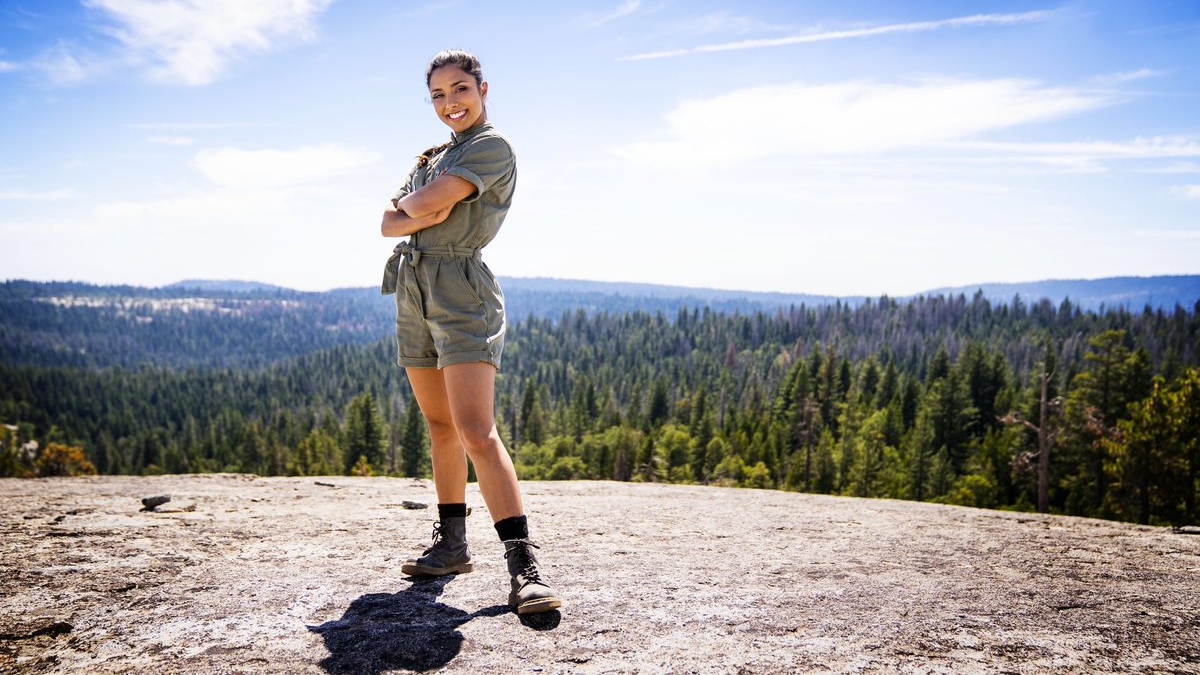Written By: Huizhu Pan
I first learned about karma from an essay about the dominant cultural pattern of Hindus in India. The author wrote that “… karma refers to the chain of cause and effect, set in motion by one’s deeds in the world.” The concept was a bit recondite to me as it talked about an intangible spirit under the philosophy of life. So, when I heard of HBO Max’s “Karma,” I wondered how would this religious term work within a teen reality show? Could the young contestants with limited life experience understand the gist?
After watching the eight episodes of the first season, I find “Karma” successfully applies the spirit of karma to its game’s rules. The show takes 18 contestants, ranging from 12 to 15, to a remote alpine mountain where they will have to compete over eight sections of physical and mental challenges with a knockout system. Once eliminated, the out team gives one of the remaining teams their medallions which turn out to be decisive in winning the ultimate prize of $50,000. That is to say, the key to the triumph is not simply to win each challenge, but to maintain a strategic and balanced relationship with the other contestants.
The unique location of “Karma,” wilderness surrounded by mountains and rivers, plays a critical role in explicating the spirit. First, the youngsters have to confront the tough living condition and homesickness. Many of them are shocked when seeing that “there is nothing but wood and sleeping bags” in the small cabin. But the situation also helps push the characters to explore their potentials under extreme circumstances. The physically challenging games set above the river and across the wilderness are exhausting, yet the contestants are arduous to win. “I want to show what us girls wearing scarves are made of,” says the perseverant Muslim girl Illya.
Besides, the isolated place also brings mental challenges, especially regarding interpersonal communication. Part with cell phones and the Internet, the contestants have to rely on each other to figure out the game’s rules. The Massachusetts girl Skyla says in an interview that “A major part of the alliances forming was not having access to cell phones.” A contestant’s leaving message is touching, “I wish I could have treated you not simply as players but as people,” he writes. This practice gives the audience an essential lesson on interpersonal relationships: the way you treat others will eventually impact the way you are treated.
Additionally, the power relationships implied in the competition are worth thinking about. In the first seven rounds of the competition, the strongest team is awarded the power to manipulate the other teams. The contestants have to learn that owning power does not equal winning the final game. The winner is the one who knows how to properly use the power, and that is all about one’s mental and moral state. To some extent, the place of nowhere is a metaphor for the mysterious spiritual space in real life. Although intangible, what you believe in always has a great impact on the physical world.
But is that all of karma? The show simplifies the law of karma into a slogan “What goes around, comes around.” Admittedly, it helps the young constants to understand the game’s rule in the first place. Yet, regarding the game’s design, “Karma” relies too much on possibility rather than the players’ distinctive abilities. For instance, in the challenge at the Cave of Karma, two selected teams take turns to smash open one of the ten stone chambers on their side. And the first team to find their Karma Coins hidden under the chambers will win the game. Thus, it leaves little room for the constants to show their strategies and skills.
Moreover, I argue “Karma” lacks necessary instructions on why karma matters, putting aside the $50,000 prize. The term karma is not only about the cause and effect of the present time, it is also about the connection between the past, the present and the future. In the show, the 18 constants have various racial and family backgrounds and are adept in different fields. Some come to express their community, some come for their parents, and some anticipate to release the family burden. In order to further understand karma, I believe they have to overcome their personal desires and care about each other.
The host Michelle Khare is supposed to be the key leader of the progress. As a YouTube billionaire who has a half Indian racial background, Khare has always wanted to bring Indian culture to her audiences. However, her function in the show is a bit weak as she only shows up to announce the rules instead of guiding the young contestants to understand the spirit.
All in all, despite the flaws of “Karma”, I understand that it’s always hard to balance an entertaining process and an educational aim. And I still believe “Karma” is a good choice for family watching as the producer JD Roth indicates that the show is “a transformative way to teach kids that the energy you put in is the energy you can expect to get back.”
“Karma” is available to stream on HBO Max.

